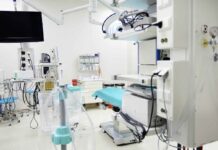In today’s bustling medical settings, where efficiency and patient well-being are top priorities, the significance of precise asset tracking cannot be emphasized enough. The adoption of solutions for tracking assets has been shown to boost operational efficiency in healthcare environments. This article delves into how the use of tracking technologies can enhance efficiency, save time and resources, minimize errors, and ultimately elevate the quality of patient care.
Improving Equipment Inventory Management
Efficient medical asset tracking systems empower healthcare facilities to maintain an organized inventory management process, ensuring that crucial equipment is easily accessible when required. By leveraging barcode or RFID scanning technologies, hospitals can swiftly identify the equipment within their premises and locate it promptly. This enables staff members to avoid wasting time searching for equipment and instead focus on providing care to patients.
Minimizing Equipment Downtime
Machine maintenance and calibration are essential for ensuring the smooth operation of medical devices. Medical asset tracking systems play a role in enhancing maintenance programs by offering real-time notifications for regular upkeep tasks. This proactive approach helps reduce equipment failures and minimizes costly downtimes that could disrupt operations. By setting up scheduled maintenance alerts through asset tracking systems, hospitals can ensure their devices operate efficiently without causing interruptions in activities.
Ensuring Patient Safety
The safety of patients is a priority in healthcare settings at all times. The detailed documentation offered by tracking systems serves as a measure against potential incidents linked to malfunctioning or poorly calibrated medical equipment. With tracking of every piece of equipment and regular updates to records, the risk of using devices that could endanger patients is significantly reduced.
Enhancing Staff Efficiency
The search for lost equipment takes up time for staff members in an already busy work environment. Leveraging asset-tracking solutions helps boost staff efficiency by allowing responses based on location through user-friendly dashboards or mobile apps that provide real-time updates on device availability. This enables caregivers to locate equipment, empowering them to focus more on direct patient care rather than getting caught up in time-consuming searches.
Optimizing Resource Management
Medical asset tracking systems assist healthcare facilities in evaluating their capital investments by offering insights into equipment utilization rates. By utilizing analytics derived from tracking technologies, administrators can assess whether they have the right amount of assets across departments. It also helps them identify trends indicating underutilization or excessive use of equipment.
With this information, hospitals can make informed decisions about how to redistribute and optimize resources, aiming to cut expenses and boost efficiency.
Minimizing Loss and Theft
To prevent the loss or theft of assets, which is crucial for both meeting medical regulatory requirements and ensuring financial stability in healthcare organizations, asset tracking solutions offer a reliable layer of security against unauthorized access or misplacement. These solutions come with real-time monitoring features and alerts for any activities or movements, providing hospital staff with peace of mind knowing that their valuable assets are safeguarded while complying with regulations effectively.
Enhancing Equipment Utilization and Preventing Hoarding
In healthcare environments, it’s not uncommon for specific departments or individuals to hold onto equipment excessively, resulting in distribution and wastage of resources. Medical asset tracking systems can help monitor equipment utilization across departments and help detect instances of asset hoarding. By identifying devices that are underutilized or reserved excessively, healthcare institutions can promptly address these issues. This proactive approach helps enhance equipment distribution fairness and ensures resources are distributed equitably throughout the facility.
Streamlining Reordering Processes
Maintaining a supply of consumables is essential for delivering uninterrupted patient care. Asset tracking systems streamline reordering by integrating inventory management with purchase order workflows. Automating the process of restocking through real-time updates and notifications ensures that essential supplies are promptly replenished when they run low. By reducing involvement, in the restocking procedure, hospitals can minimize paperwork errors prevent stock shortages, and improve efficiency.
Managing Equipment Lifecycle
Each medical device goes through a lifecycle that includes acquisition, maintenance, deployment, decommissioning, and replacement stages. Monitoring assets throughout their lifecycle provides data on usable lifespans, depreciation rates, service frequency, and cost analysis for timely replacements or upgrades. By managing these aspects with asset tracking technologies, healthcare facilities can make decisions regarding technology refresh cycles to ensure optimal efficiency while mitigating risks associated with outdated equipment.
Conclusion
Efficient medical asset tracking systems benefit healthcare institutions in terms of efficiency and overall patient care quality. Hospitals can achieve heightened operational effectiveness and cost-saving results by streamlining inventory management processes, reducing equipment downtime, enhancing safety measures, boosting staff productivity levels, optimizing resource allocations, and minimizing instances of loss or theft incidents. Embracing cutting-edge technologies for asset tracking signifies a step towards a more efficient future in healthcare delivery systems.






